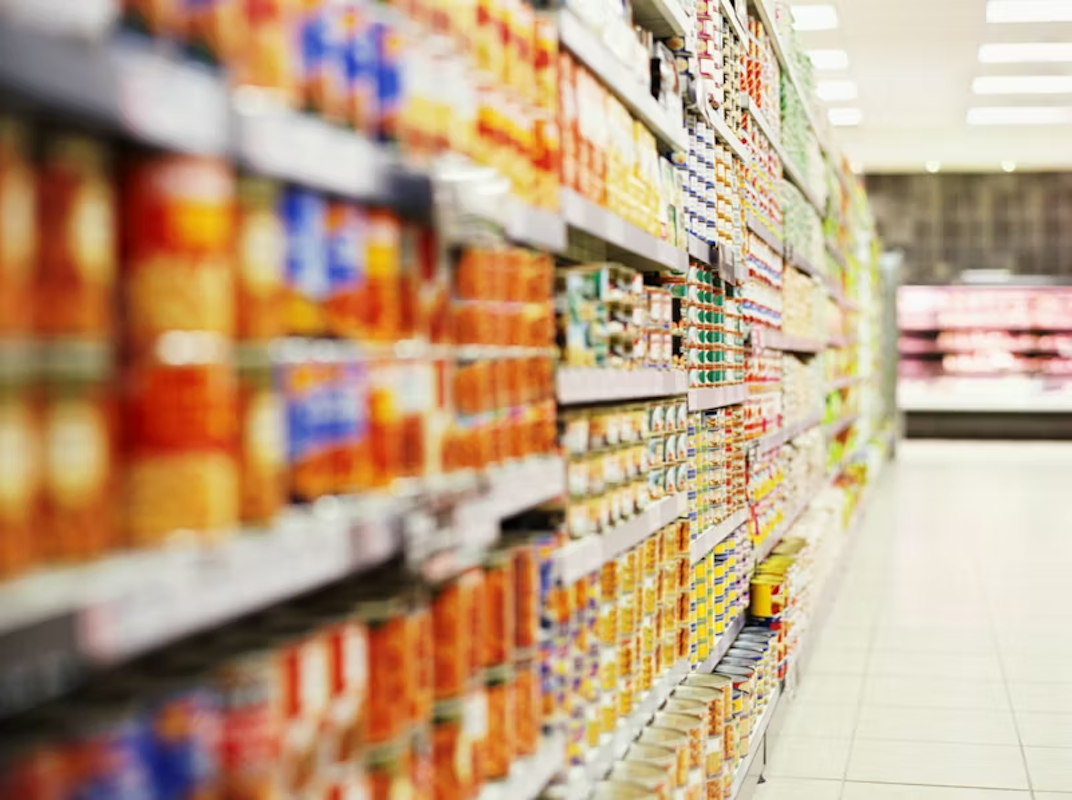13 min read
5 Loyalty Program Email Examples to Use in Your Campaigns
When you send reward program emails to loyalty customers, you engage with them on a personal level. From personalized titles to special offerings...
Platform
What is Paytronix Guest Engagement Suite?
Combining online ordering, loyalty, omnichannel messaging, AI insights, and payments in one suite. Paytronix delivers relevant, personal experiences, at scale, that help improve your entire digital marketing funnel by creating amazing frictionless experiences.
A Complete Guest Engagement Suite
Online Ordering
Acquire new customers and capture valuable data with industry leading customization features.
Loyalty
Encourage more visits and higher spend with personalized promotions based on individual activity and preferences.
Catering
Grow your revenue, streamline operations, and expand your audience with a suite of catering tools.
CRM
Build great customer relationships with relevant personal omnichannel campaigns delivered at scale.
Artificial Intelligence
Leverage the most data from the most customer transactions to power 1:1 marketing campaigns and drive revenue.
Payments
Drive brand engagement by providing fast, frictionless guest payments.
Solutions
Paytronix Guest Engagement Solutions
We use data, customer experience expertise, and technology to solve everyday restaurant and convenience store challenges.
FlightPaths are structured Paytronix software onboarding journeys designed to simplify implementation and deliver maximum ROI.
Customer Success Plans (CSPs) are tiered service offerings designed to help you get the most from your Paytronix software, whether you prefer self-guided support or hands-on partnership.
Contactless Experiences
Accommodate your guests' changing preferences by providing safe, efficient service whether dining-in or taking out.
Customer Insights
Collect guest data and analyze behaviors to develop powerful targeted campaigns that produce amazing results.
Marketing Automation
Create and test campaigns across channels and segments to drive loyalty, incremental visits, and additional revenue.
Mobile Experiences
Provide convenient access to your brand, menus and loyalty program to drive retention with a branded or custom app.
Subscriptions
Create a frictionless, fun way to reward your most loyal customers for frequent visits and purchases while normalizing revenues.
Employee Dining
Attract and retain your employees with dollar value or percentage-based incentives and tiered benefits.
Order Experience Builder
Create powerful interactive, and appealing online menus that attract and acquire new customers simply and easily.
Loyalty Programs
High-impact customizable programs that increase spend, visit, and engagement with your brand.
Online Ordering
Maximize first-party digital sales with an exceptional guest experience.
Integrations
Launch your programs with more than 450 existing integrations.
Loyalty Programs
Deliver the same care you do in person with all your digital engagements.
Online Ordering
Drive more first-party orders and make it easy for your crew.
Loyalty Programs
Digital transformations start here - get to know your guests.
Online Ordering
Add a whole new sales channel to grow your business - digital ordering is in your future.
Integrations
We work with your environment - check it out
Tobacco Reporting
Comply with AGDC 2026 DTP Requirements
Company
We are here to help clients build their businesses by delivering amazing experiences for their guests.
Meet The Team
Our exceptional customer engagement innovations are delivered by a team of extraordinary people.
News/Press
A collection of press and media about our innovations, customers, and people.
Events
A schedule of upcoming tradeshows, conferences, and events that we will participate in.
Careers
Support
Paytronix Login
Order & Delivery Login
Resources
Paytronix Resources
Learn how to create great customer experiences with our free eBooks, webinars, articles, case studies, and customer interviews.
FlexPoint Service Catalog
Access FlexPoints are a cost-effective, flexible way to access our value-added services, to ensure you get greater impact from your Access software solution.
See Our Product In Action
E-Books
Learn more about topics important to the restaurant and c-store customer experience.
Reports
See how your brand stacks up against industry benchmarks, analysis, and research.
Blog
Catch up with our team of in-house experts for quick articles to help your business.
Case Studies
Learn how brands have used the Paytronix platform to increase revenue and engage with guests.
The brands winning now aren't competing on price. They're turning every transaction into a relationship. Discover how in the 2026 Trends Predictions Report.
8 min read
Jun 04, 2024

Have you ever entered a shop with an overly complicated loyalty card program?
Earn one point for every drink purchase. You see that it’s for select items that rotate monthly. It’s only on Mondays and Wednesdays and double points during “happy hours.” Then, you receive a pamphlet full of terms. What a turn-off.
In this article, learn how to make a loyalty program people want to join and what it takes to keep them engaged long after they sign up.
A loyalty program keeps guests coming back. You do this by offering compelling rewards in exchange for repeat business. But not all programs hit the mark.
As the cost of losing a guest keeps rising, retention is becoming one of the clearest paths to long-term revenue growth.
Customers no longer want their loyalty treated like punch cards. They prefer a well-rounded approach, including:
The program has to work everywhere they interact with your brand. Whether that’s online, through your app, or in-store, the experience should stay consistent and easy to follow.
It’s surprising to find out that only 11% of loyalty programs offer rewards based on what people buy or where they are. That’s a missed chance to make your program feel more personal.
Programs tend to fail when they include:
Sometimes, the problem also involves how teams align themselves. Remember that loyalty program benefits should cover all stakeholders, including your finance, marketing, and information technology (IT) teams. That’s when you know it’s a success.
The most successful loyalty programs share these five core traits:
If you want your loyalty program to work today, you should structure every aspect with purpose — from the offers themselves to the tech behind them.
Every department needs to know what success looks like. Let them see how loyalty ties into their priorities. Here are some relatable goals:
In the US alone, the average consumer joins around 12 loyalty programs. With so many options, enticing them won’t be enough. Many others have already succeeded in this. You’ll need to stand out.
Align your structure to how people interact with your brand. Interesting loyalty formats include:
Here’s a quick look at how each loyalty program type stacks up for various businesses:
|
Program Type |
Quick-Serve Restaurants (QSR) |
Convenience Store (C-Store) |
Full Service |
Franchise Group |
|
Points-based |
Simple to use and quick to earn; great for volume |
Matches fast-paced visits and purchases |
Can feel low value unless rewards are thoughtful |
Scalable and manageable across many units |
|
Tiered |
Motivates repeat visits with status perks |
Works well if guests come in regularly |
Adds exclusivity and encourages higher spend |
Helps compare performance across locations |
|
Subscription |
Steady revenue but less flexible for guests who want to visit occasionally |
Often not relevant for fuel and snack trips |
Limits appeal; diners may not want to pre-commit |
Harder to implement and justify across multiple markets |
|
Coalition |
Expands reach with strategic partners |
Useful when partnered with fuel or retail brands |
Has potential, but it can distract from your core brand experience |
Works well for co-branded or regional programs |
|
Hybrid |
Customizable and covers more use cases |
More effort to manage and maintain |
Supports diverse guest preferences |
Offers flexibility across different store types |
As you can see, some work better than others. Subscription models aren’t as ideal for a full-service restaurant loyalty program compared to a points-based program. It pays to research your specific needs and which program fits before committing.
Before launching, ask yourself: “Would I sign up for this as a customer?”
If the answer isn’t a quick yes, it needs work.
Look at 7Rewards from 7-Eleven. Their program gives guests simple points for purchases. It’s so effective because it’s in an all-in-one app. Their guests also get timely digital deals and sending app notifications based on location. It’s low-lift for the user, high-impact for the brand. This makes it a habit.
To create your version:
Boosting your loyalty program enrollment requires an easy signup. Here are ways to do it.
The harder it is to join, the fewer people will. Make your enrollment process as quick and flexible as possible by:
Your signup bonus should make a good first impression. Think a free drink, a fuel discount, or $5 back after a first visit.
These work so well because of instant gratification, where people are more likely to act when the reward is immediate, the ask is simple, and there’s a deadline. Let the way we humans naturally make decisions work in your favor.
Your team at the counter or register has more influence than you think. Equip them with a quick pitch that they can deliver in under 10 seconds. Then, reinforce it with clear goals and light incentives, like small prizes or team contests for signups.
When employees understand, they’re more likely to talk about it. That’s what gets guests to sign up and stay.
Your loyalty program design can make or break how your guests experience and value your program. Building something sustainable means shaping it around how people behave and what keeps their attention.
We’ve brushed on this earlier, and we’ll say it again. Personalization continues to be one of the most effective ways to make a loyalty program stick. It’s the simple logic that when your offers reflect real purchase habits, they feel useful.
Someone who always grabs a breakfast sandwich on weekdays might receive a bonus for morning visits. A guest who fuels up every Friday could get a weekend-only reward.
Tap into recency, frequency, and product preferences so that moments when engaging with your brand feel tailored.
Static programs fade fast. You keep people engaged by switching things up. That includes improving your loyalty program with gamification and short-term campaigns.
Consider:
These create a sense of momentum and turn participation into something active, not passive.
Guests shouldn’t have to wonder if the program is “doing” anything. Use loyalty dashboards to show point balances, progress toward goals, and reward history.
Regular updates and reminders, like “You’re 10 points from a free sandwich!” make rewards feel within reach. When people see their rewards building, they’re more likely to stay engaged.
Your loyalty platform shapes how your entire program performs. It’s the system that does it all: manages enrollment, tracks rewards, personalizes offers, and helps teams act on customer data. It’s a strategic choice that makes a serious impact.
Not every system can handle the complexity of a modern loyalty program. Here’s what to look for:
Every department uses loyalty tech differently. Suitable platforms should be able to meet each team’s priorities:
For restaurants and C-stores looking to grow through smarter loyalty, Paytronix is a proven partner. It powers data-driven loyalty programs for national chains and regional brands alike, helping them turn insights into action and drive real results.
Notable features include:
Take Smashburger. After relaunching its Smash Club Rewards with Paytronix, the brand shifted from generic messaging to personalized, data-driven campaigns. That switch helped loyalty-driven revenue grow to 6.5% of annual sales.
Whether you’re running one location or 50, Paytronix makes it easy to build your loyalty program without adding extra work.
Launching your loyalty program is only the start. It’s time to measure, learn, and adjust.
Keep in mind these KPI metrics:
These metrics should be able to help you see what’s working, what’s not, and where to focus next. But there’s another layer worth tracking. You also need to understand what your rewards cost.
Redemption rate shows how often guests use the rewards you offer. There’s also margin impact that measures what those redemptions cost compared to the profit they generate.
A high redemption rate sounds great but not if it eats into your margins. Aim for a balance of giving enough value to keep guests engaged without hurting your bottom line.
Not everyone needs the same data. Here’s how different teams benefit from tailored dashboards:
The best loyalty platform features support this kind of reporting out of the box, giving your entire team the tools to monitor progress and grow smarter.
Let’s tackle some of the most common questions about creating a successful loyalty program.
The cost to develop a loyalty program varies greatly based on its complexity and features. Small businesses may spend a few hundred dollars on simple systems like punch cards or basic points programs.
Larger brands can invest tens or hundreds of thousands in advanced programs with apps, personalized rewards, and analytics, which are all designed to boost engagement and retention.
Loyalty programs are a smart investment. They retain existing customers, who are less expensive to keep than acquire, and drive higher spend. Starbucks Rewards now accounts for 53% of in-store spend. While setup costs can be high, a strong loyalty program boosts long-term profits and customer lifetime value (CLV).
Around 77% of loyalty programs fail within two years, often because they feel transactional. This includes low engagement, vague benefits, or not evolving with guests needs. Success depends on building a program that fits your audience and adjusting it based on their feedback.
Learning how to make a loyalty program that works means focusing on four essentials: A smooth guest experience, real value, personalized rewards, and a cross-functional approach.
See your program as a product, and not a one-time setup. Then, keep improving it based on performance and feedback.
Are you ready to build a loyalty program that customers will want to use? Book a Paytronix demo to see how we help brands launch, scale, and optimize programs that drive impact without the hassle.

13 min read
When you send reward program emails to loyalty customers, you engage with them on a personal level. From personalized titles to special offerings...

14 min read
Key Takeaway: Savvy restaurant and convenience store (c-store) brands are leveraging innovative loyalty strategies like personalization, data...

20 min read
People turn to convenience stores because they make life easier. Whether it’s a late-night snack or a last-minute errand, these stores are there when...